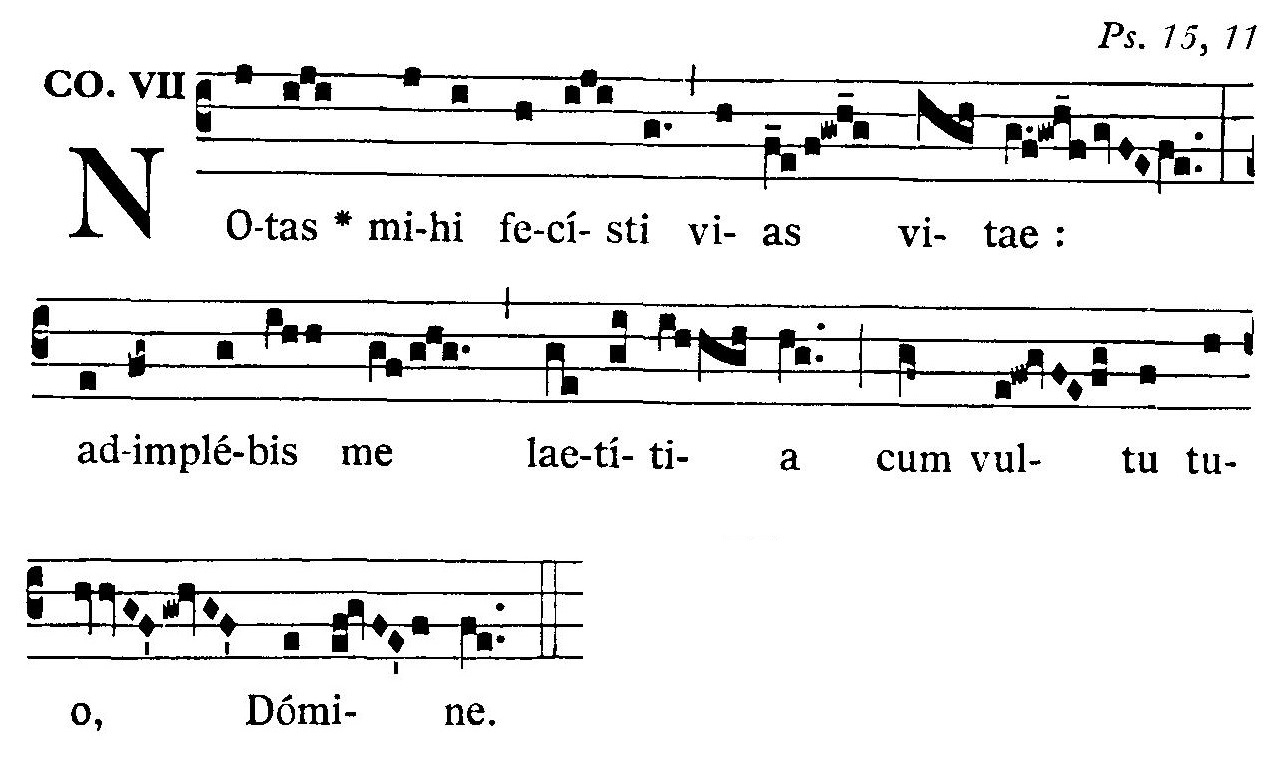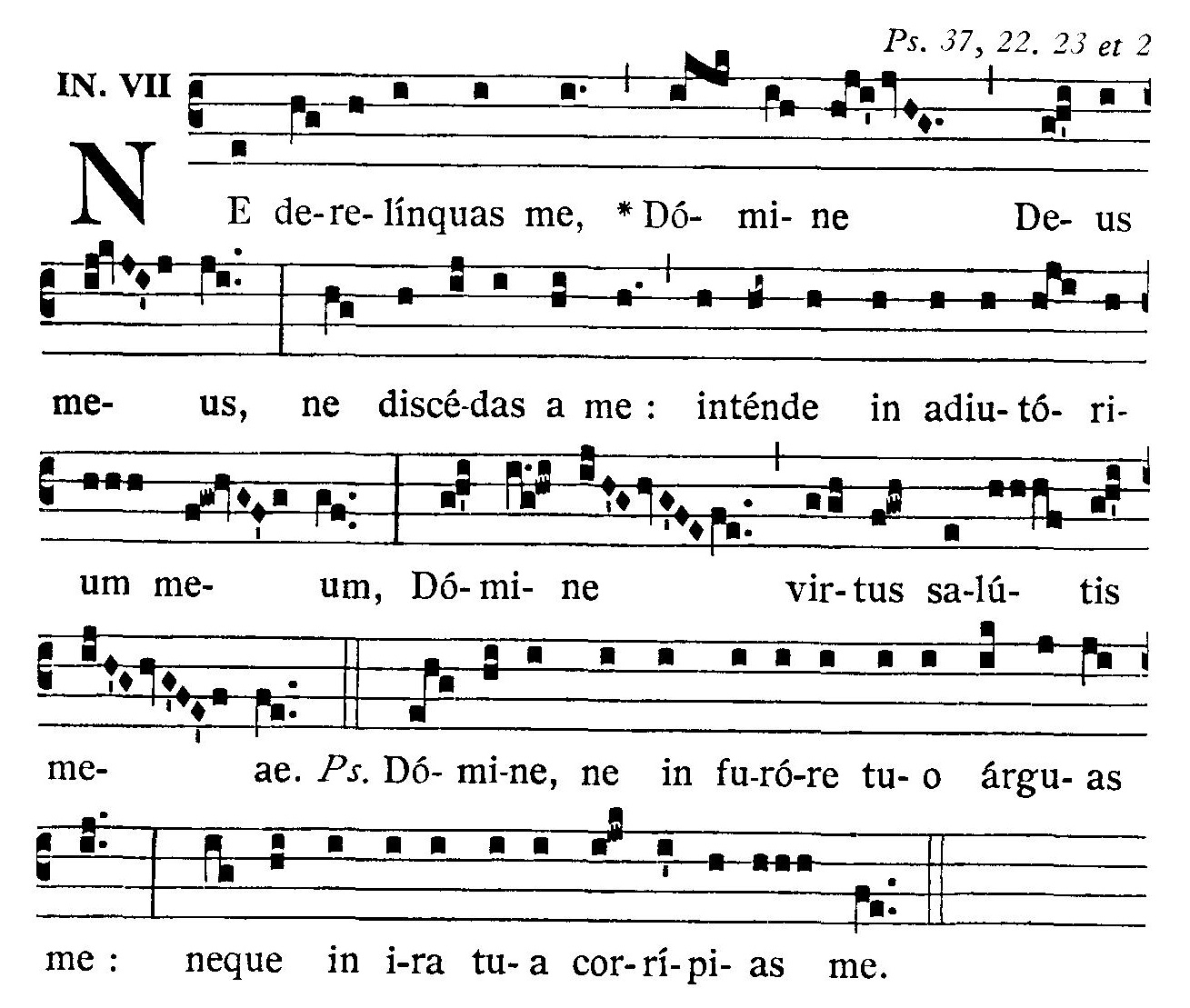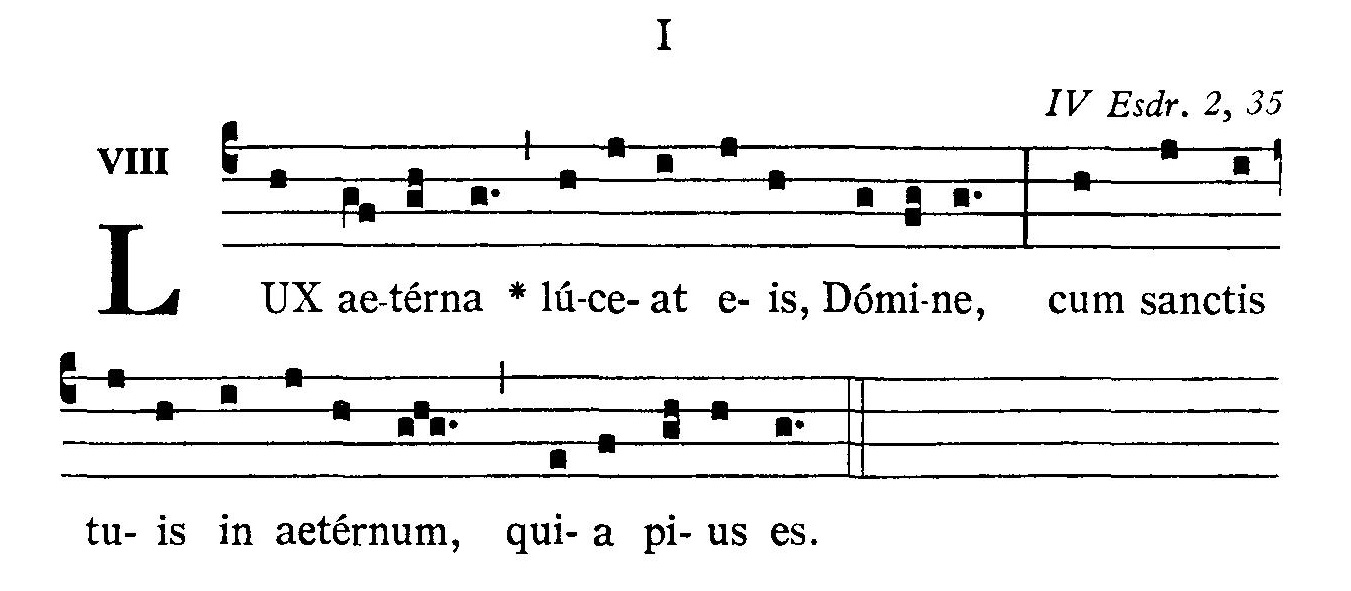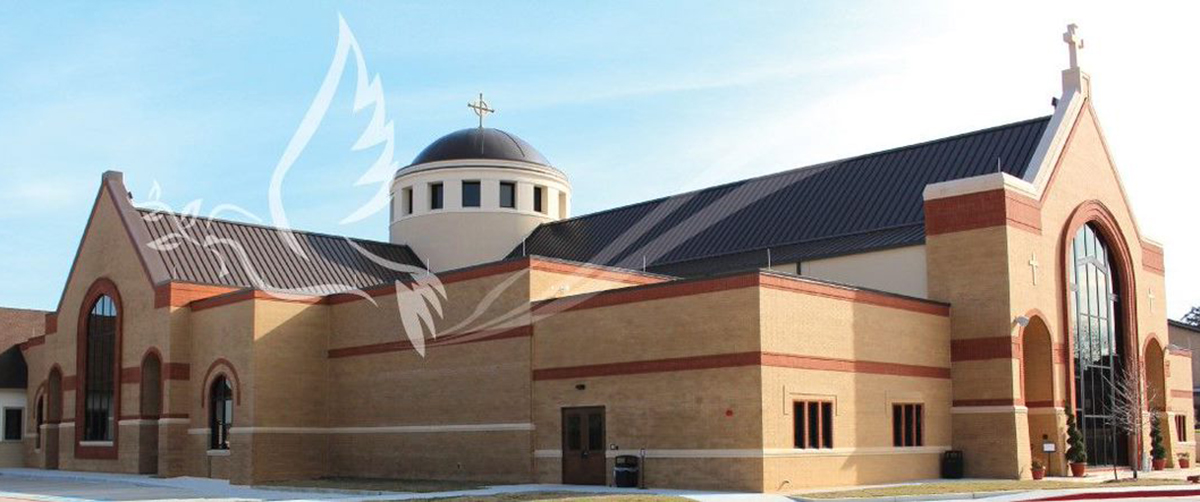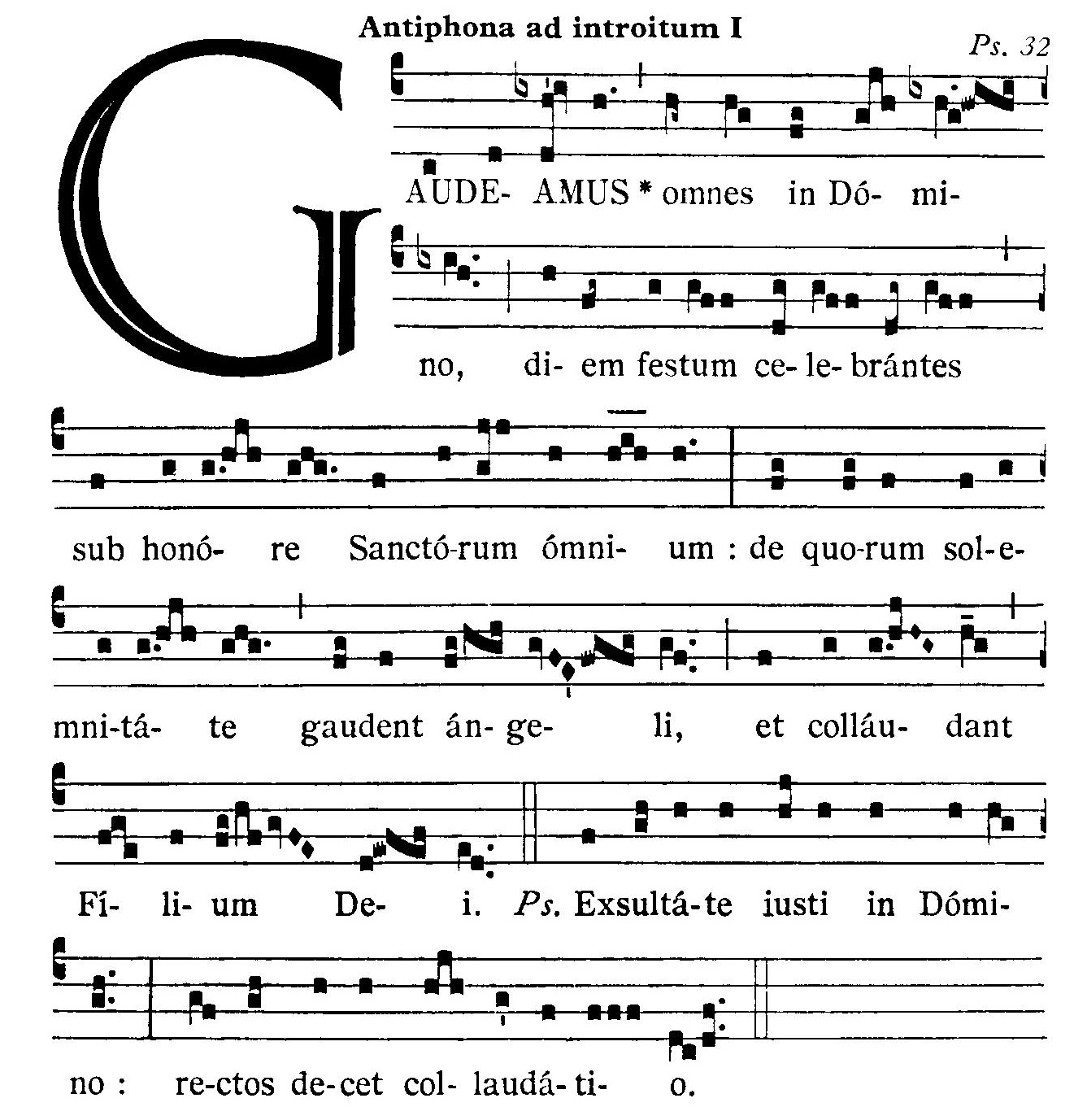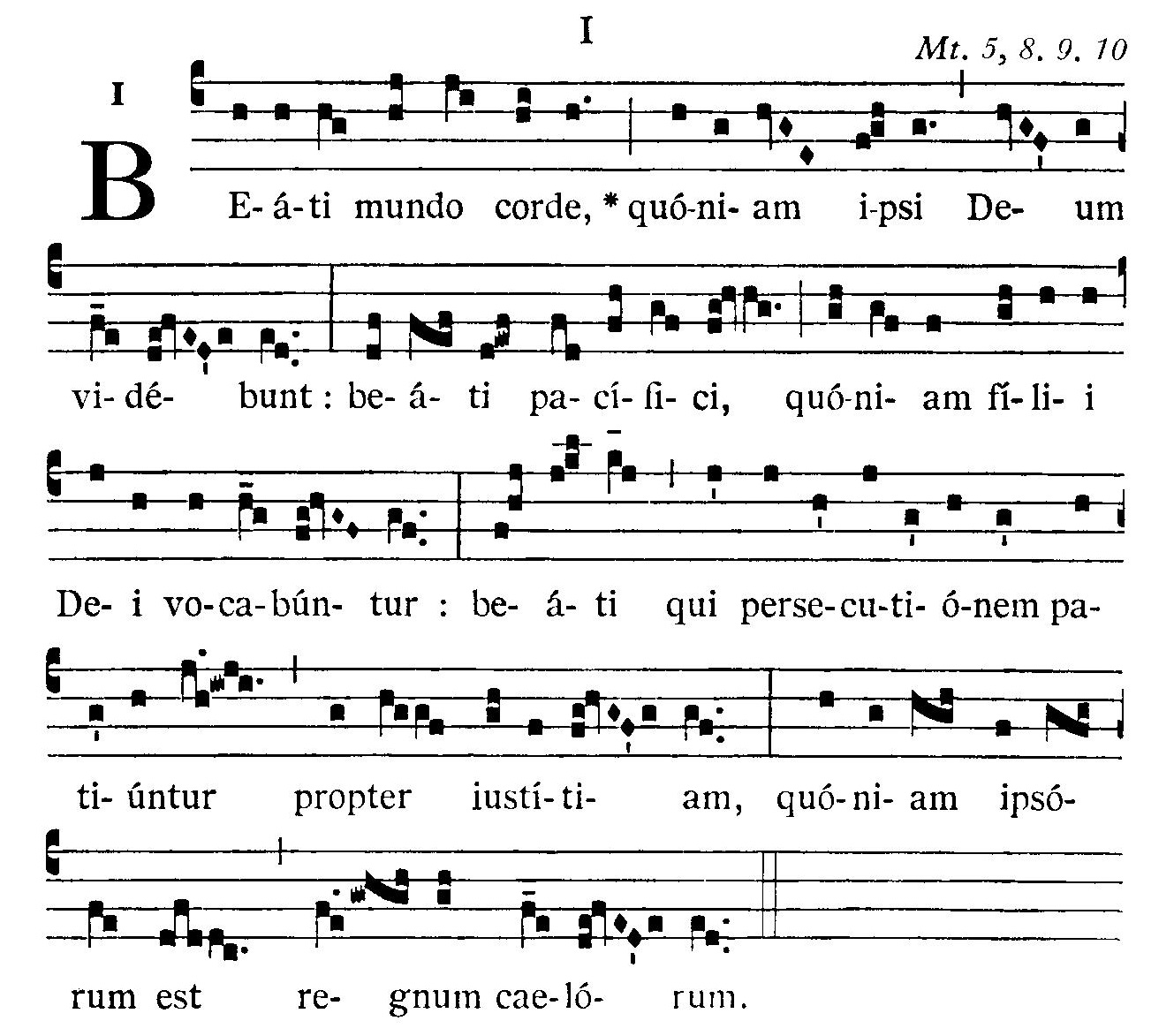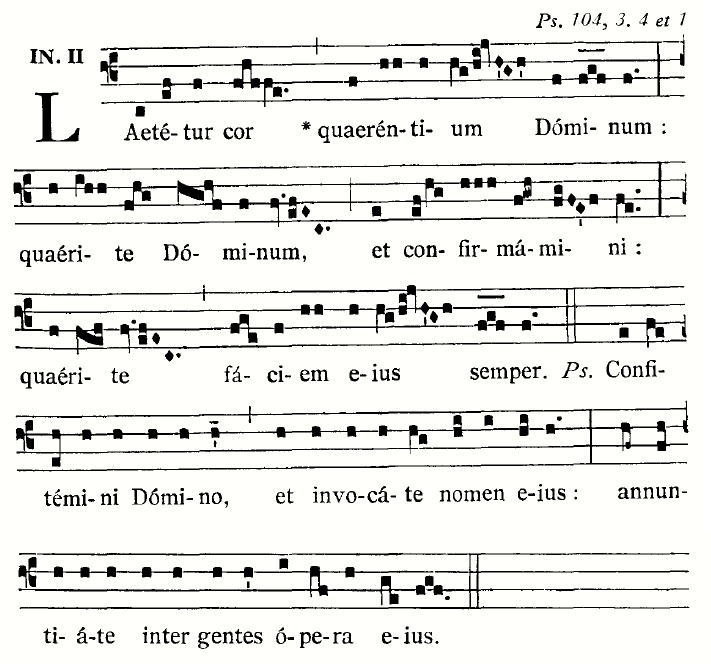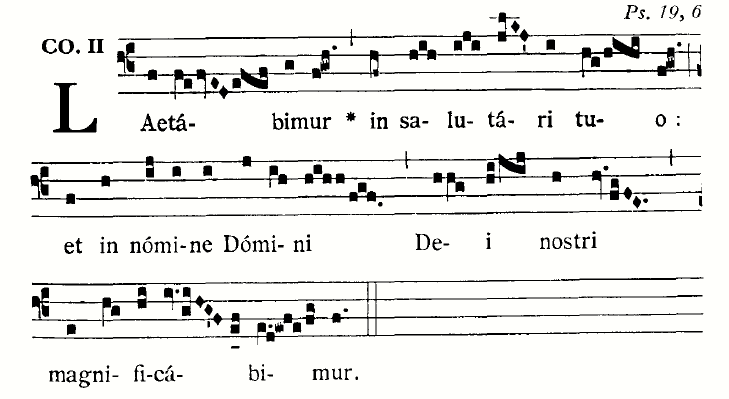1. Quamvis integræ Missæ, cum suis antiphonis et orationibus, commoditatis causa, proponantur, omnes textus cum aliis commutari possunt, præsertim ad orationes quod attinet, mutatis tamen, pro cuiusvis circumstantiæ opportunitate, genere aut numero. Item in orationibus, quæ pro exsequiis aut pro anniversario proponuntur, si in aliis rerum adiunctis adhibentur, omittantur verba, quæ minus apta evadant.
2. Tempore paschali, Allelúia in fine antiphonarum omitti potest pro opportunitate.
I. IN EXSEQUIIS
Missa exsequialis celebrari potest omnibus diebus, exceptis sollemnitatibus de præcepto, Feria V Hebdomadæ sanctæ, Triduo paschali et dominicis Adventus, Quadragesimæ aut Paschæ.
A. Extra tempus paschale
Ant. ad introitum Cf. 4 Esdr 2, 34-35
Réquiem ætérnam dona eis, Dómine,
et lux perpétua lúceat eis.
Collecta
Deus, Pater omnípotens,
cuius Fílium mórtuum fuísse et resurrexísse
fides nostra fatétur, concéde propítius,
ut hoc mystério fámulus tuus N.,
qui in illo dormívit,
per illum resúrgere lætétur.
Qui tecum.
Vel:
Deus, cui próprium est miseréri semper et párcere,
te súpplices exorámus pro fámulo tuo N.,
quem (hódie) ad te migráre iussísti,
ut, quia in te sperávit et crédidit,
concédas eum ad veram pátriam perdúci,
et gáudiis pérfrui sempitérnis.
Per Dóminum.
Super oblata
Pro fámuli tui N. salúte
hóstias tibi, Dómine, supplíciter offérimus
tuam cleméntiam deprecántes,
ut, qui Fílium tuum pium Salvatórem esse non dubitávit,
misericórdem Iúdicem invéniat.
Qui vivit et regnat in sǽcula sæculórum.
Præfatio de defunctis.
Ant. ad communionem Cf. 4 Esdr 2, 34-35
Lux ætérna lúceat eis, Dómine,
cum Sanctis tuis in ætérnum, quia pius es.
Réquiem ætérnam dona eis, Dómine,
et lux perpétua lúceat eis,
cum Sanctis tuis in ætérnum, quia pius es.
Post communionem
Dómine Deus, cuius Fílius in sacraménto Córporis sui
viáticum nobis relíquit,
concéde propítius, ut per hoc frater noster N.
ad ipsam Christi pervéniat mensam ætérnam.
Qui vivit et regnat in sǽcula sæculórum.
B. Extra tempus paschale
Ant. ad introitum
Apériat ei Dóminus paradísi iánuam,
ut ad illam pátriam revertátur,
ubi mors non est, ubi ætérnum gáudium persevérat.
Collecta
Deus, misericórdia peccatórum
et tuórum beatitúdo Sanctórum,
da, quǽsumus, fámulo tuo N.,
cuius depositiónis (hódie) offícia humanitátis persólvimus,
cum eléctis tuis beáti múneris portiónem,
ut eum, a mortalitátis néxibus absolútum,
in die resurrectiónis ante fáciem tuam præsentári concédas.
Per Dóminum.
Vel:
Deus, qui posuísti præséntis vitæ términum,
ut æternitátis réseres intróitum,
te súpplices deprecámur,
ut nomen fámuli tui N.
in libro vitæ miseratiónis tuæ gratia iúbeas cónscribi.
Per Dóminum.
Super oblata
Adésto, Dómine, quǽsumus, pro fámulo tuo N.,
cuius in die depositiónis
hoc sacrifícium tibi placatiónis offérimus,
ut, si qua ei peccáti mácula inhǽsit
aut vítium humánum infécit,
dono tuæ pietátis indúlgeas et abstérgeas.
Per Christum.
Præfatio de defunctis.
Ant. ad communionem Phil 3, 20-21
Salvatórem exspectámus
Dóminum nostrum Iesum Christum,
qui reformábit corpus humilitátis nostræ
configurátum córpori claritátis suæ.
Post communionem
Præsta, quǽsumus, omnípotens Deus,
ut fámulus tuus N.,
qui (hódie) de hoc sǽculo migrávit,
his sacrifíciis purgátus et a peccátis expedítus,
resurrectiónis suscípiat gáudia sempitérna.
Per Christum.
C. Tempore paschali
Ant. ad introitum 1 Thess 4, 14; 1 Cor 15, 22
Sicut Iesus mórtuus est et resurréxit,
ita et Deus eos qui dormiérunt
per Iesum addúcet cum eo.
Et sicut in Adam omnes moriúntur,
ita et in Christo omnes vivificabúntur, allelúia.
Collecta
Preces nostras, quǽsumus, Dómine, benígnus exáudi,
ut, dum extóllitur nostra fides
in Fílio tuo a mórtuis suscitáto,
in fámuli tui N. præstolánda resurrectióne
spes quoque nostra firmétur.
Per Dóminum.
Vel:
Deus, qui per finem præséntium
princípia pándis futurórum,
præsta, quǽsumus,
ut ánima fámuli tui N.
ad redemptiónis ætérnæ
pervéniat, te ducénte, consórtium.
Per Dóminum.
Super oblata
Nostris, Dómine, propitiáre munéribus,
ut fámulus tuus N. assumátur in glóriam cum Fílio tuo,
cuius magno pietátis iúngimur sacraménto.
Qui vivit et regnat in sǽcula sæculórum.
Præfatio de defunctis.
Ant. ad communionem Io 11, 25-26
Ego sum resurréctio et vita, dicit Dóminus.
Qui credit in me, étiam si mórtuus fúerit, vivet;
et omnis, qui vivit et credit in me,
non moriétur in ætérnum, allelúia.
Post communionem
Præsta, quǽsumus, Dómine,
ut fámulus tuus N. in mansiónem lucis tránseat et pacis,
pro quo paschále celebrávimus sacraméntum.
Per Christum.
D. Aliæ orationes pro Missa exsequiali
Collecta
Deus, cui soli cómpetit vitam post mortem præstáre,
líbera fámulum tuum N. ab ómnibus peccátis,
ut, qui Christi tui resurrectiónem crédidit,
témpore resurrectiónis gloriósus tibi iungátur.
Per Dóminum.
Super oblata
Omnípotens et miséricors Deus,
his sacrifíciis áblue, quǽsumus, fámulum tuum N.
a peccátis suis in sánguine Christi,
ut, quem mundásti aqua baptísmatis,
indesinénter purífices indulgéntia pietátis.
Per Christum.
Post communionem
Sumpto sacraménto Unigéniti tui,
qui pro nobis immolátus resurréxit in glória,
te, Dómine, supplíciter exorámus pro fámulo tuo N.,
ut, paschálibus mystériis mundátus,
futúræ resurrectiónis múnere gloriétur.
Per Christum.
E. In exsequiis parvuli baptizati
1
Ant. ad introitum Mt 25, 34
Veníte, benedícti Patris mei, dicit Dóminus:
percípite regnum,
quod vobis parátum est ab orígine mundi (T.P. allelúia).
Collecta
Clementíssime Deus, qui sapiéntiæ tuæ consíliis
hunc párvulum, in ipso vitæ límine, ad te vocásti,
preces nostras benígnus exáudi,
et præsta, ut cum ipso,
quem baptísmatis grátia adoptiónis tibi fílium effecísti,
et in regno tuo iam crédimus commorári,
nos étiam ætérnæ vitæ tríbuas esse aliquándo consórtes.
Per Dóminum.
Super oblata
Hæc múnera tibi, Dómine, obláta sanctífica,
ut, quem paréntes a te donátum tibi reddunt infántem,
ipsum læti in regno tuo mereántur amplécti.
Per Christum.
Præfatio de defunctis.
Ant. ad communionem Cf. Rom 6, 4.8
Consepúlti cum Christo per baptísmum in mortem,
crédimus quia simul étiam vivémus cum Christo
(T.P. allelúia).
Post communionem
Córporis, Dómine, et Sánguinis Fílii tui
communióne percépta,
te fidéliter deprecámur,
ut, quos in spem vitæ ætérnæ
sacris dignátus es nutríre mystériis,
in huius tríbuas vitæ mæróribus confortári.
Per Christum.
2
Aliæ orationes
Collecta
Deus, qui mæróre scis corda nostra cómprimi
propter huius infántis excéssum,
præsta, ut, quem iam hac vita defúnctum,
te disponénte, deflémus,
ætérnam in cælo sedem credámus adéptum.
Per Dóminum.
Super oblata
Hanc oblatiónem, Deus,
dignáre in nostræ signum devotiónis excípere,
ut, qui tuæ providéntiæ consíliis submíttimur confidéntes,
tuæ quoque pietátis dulcédine sublevémur.
Per Christum.
Post communionem
Divíno múnere satiáti, te, Dómine, deprecámur,
ut, qui hunc infántem
ad mensam tríbuis regni cæléstis accúmbere,
eándem et nos participáre concédas.
Per Christum.
F. In exsequiis parvuli nondum baptizati
Si quis parvulus, quem parentes baptizari volebant, ante baptismum mortuus fuerit, Episcopus diœcesanus, adiunctis pastoralibus perpensis, permittere potest ut eius exsequiæ celebrentur in ipsa domo defuncti, aut etiam iuxta illum typum exsequiarum, qui de more pro ceteris in regione adhibetur.
In huiusmodi exsequiis habeatur de more liturgia verbi, prouti in Rituali Romano describitur. Si tamen opportuna aliquando iudicatur Missæ celebratio, adhibeantur textus qui sequuntur.
In catechesi autem advigilandum est, ne doctrina de necessitate baptismi in mentibus fidelium obscuretur.
Ant. ad introitum Ap 21, 4
Abstérget Deus omnem lácrimam ab óculis eórum,
et mors ultra non erit,
neque luctus, neque clamor, neque dolor erit ultra,
quia prima transiérunt.
Collecta
Fidélium tuórum, Dómine, súscipe vota,
ut, quos permíttis infántis sibi erépti desidério déprimi,
eósdem concédas in tuæ spem miseratiónis fidénter attólli.
Per Dóminum.
Vel:
Scrutátor córdium, Deus, et piíssime consolátor,
qui horum paréntum fidem novísti,
præsta, ut infántem suum,
quem plorant hac vita defúnctum,
tuæ séntiant divínæ pietáti commíssum.
Per Dóminum.
Super oblata
Hanc oblatiónem, Deus,
dignáre in nostræ signum devotiónis excípere,
ut, qui tuæ providéntiæ consíliis submíttimur confidéntes,
tuæ quoque pietátis dulcédine sublevémur.
Per Christum.
Præfatio de defunctis.
Ant. ad communionem Is 25, 8
Præcipitábit Dóminus mortem in sempitérnum,
et áuferet Deus lácrimam ab omni fácie.
Post communionem
Córporis, Dómine, et Sánguinis Fílii tui
communióne percépta,
te fidéliter deprecámur,
ut, quos in spem vitæ ætérnæ
sacris dignátus es nutríre mystériis,
in huius tríbuas vitæ mæróribus confortári.
Per Christum.
II. IN ANNIVERSARIO
Hæc Missa celebrari potest in primo anniversario die etiam diebus infra octavam Nativitatis et diebus quibus occurrit memoria obligatoria aut feria quæ non sit IV Cinerum aut Hebdomadæ sanctæ.
In aliis anniversariis, celebrari potest in feriis “per annum”, etiamsi occurrit memoria ad libitum.
A. Extra tempus paschale
Ant. ad introitum Ap 21, 4
Abstérget Deus omnem lácrimam ab óculis eórum,
et mors ultra non erit,
neque luctus, neque clamor, neque dolor erit ultra,
quia prima transiérunt.
Collecta
Deus, glória fidélium et vita iustórum,
cuius Fílii morte et resurrectióne redémpti sumus,
propitiáre fámulo tuo N.,
ut, qui resurrectiónis nostræ mystérium agnóvit,
ætérnæ beatitúdinis gáudia percípere mereátur.
Per Dóminum.
Super oblata
Múnera, quǽsumus, Dómine,
quæ tibi pro ánima fámuli tui N. offérimus,
placátus inténde, ut, remédiis purgáta cæléstibus,
in tua glória semper viva sit et beáta.
Per Christum.
Præfatio de defunctis.
Ant. ad communionem Io 11, 25; 3, 36; 5, 24
Ego sum resurréctio et vita, dicit Dóminus.
Qui credit in me, habet vitam ætérnam,
et in iudícium non venit, sed tránsiet de morte ad vitam.
Post communionem
Sacris reparáti mystériis,
te, Dómine, supplíciter exorámus,
ut fámulus N., a delíctis ómnibus emundátus,
ætérno resurrectiónis múnere ditári mereátur.
Per Christum.
B. Extra tempus paschale
Ant. ad introitum
Dómine Iesu, concéde réquiem ætérnam eis,
pro quibus tuum pretiósum effudísti sánguinem.
Collecta
Quǽsumus, Dómine, ut fámulo tuo N.,
cuius córporis depositiónis diem commemorámus,
rorem misericórdiæ tuæ perénnem infúndas,
et Sanctórum tuórum largíri dignéris consórtium.
Per Dóminum.
Super oblata
Adésto, Dómine,
supplicatiónibus nostris pro fámulo tuo N.,
cuius mortis hódie ánnua dies ágitur,
ut, per hoc sacrifícium propitiatiónis et laudis,
eum Sanctórum tuórum consórtio sociáre dignéris.
Per Christum.
Præfatio de defunctis.
Ant. ad communionem
Qui es, Dómine, réquies post labórem,
qui es vita post mortem,
tu dona eis réquiem sempitérnam.
Post communionem
Précibus nostris et sacrifíciis, Dómine,
pro ánima fámuli tui N. benígne suscéptis,
te súpplices deprecámur,
ut, si quæ ei máculæ peccáti adhæsérunt,
remissiónis tuæ misericórdia deleántur.
Per Christum.
C. Tempore paschali
Ant. ad introitum Cf. Rom 8, 11
Deus, qui suscitávit Iesum a mórtuis,
vivificábit et mortália córpora nostra,
propter inhabitántem Spíritum eius in nobis, allelúia.
Collecta
Omnípotens et miséricors Deus,
cuius Fílius voluntárie pro nobis carnis súbiit mortem,
concéde propítius fámulo tuo N.
admirábili eius resurrectiónis victóriæ sociári.
Qui tecum.
Super oblata
Omnípotens et miséricors Deus,
his sacrifíciis áblue, quǽsumus, ánimam fámuli tui N.
a peccátis suis in sánguine Christi,
ut, quem aqua baptísmatis mundásti,
indesinénter purífices indulgéntia pietátis.
Per Christum.
Præfatio de defunctis.
Ant. ad communionem Io 6, 51-52
Ego sum panis vivus, qui de cælo descéndi, dicit Dóminus.
Si quis manducáverit ex hoc pane, vivet in ætérnum;
et panis, quem ego dabo,
caro mea est pro mundi vita, allelúia.
Post communionem
Sumpto sacraménto Unigéniti tui,
qui pro nobis immolátus resurréxit in glória,
te, Dómine, supplíciter exorámus
pro fámulo tuo N.,
ut, paschálibus mystériis emundátus,
futúræ resurrectiónis múnere gloriétur.
Per Christum.
D. Aliæ orationes in anniversario
Collecta
Concéde, quǽsumus, Dómine,
per beátam Fílii tui passiónem,
fámulo tuo N.
remissiónem, quam semper optávit, peccatórum,
ut, te in veritáte cognóscens,
visióne tua iúgiter pérfrui mereátur.
Per Dóminum.
Super oblata
Sacrifícium tibi, Dómine,
pro fámulo tuo N. supplíciter offérimus,
ut, qui te iam dono tuæ illuminatiónis agnóvit,
tibi adhærére perpétuo lætétur.
Per Christum.
Post communionem
Repléti alimónia reparatiónis et vitæ,
quǽsumus, Dómine, ut per eam frater noster N.,
ab ómnibus peccátis emundátus,
ad cæléste váleat transíre consórtium.
Per Christum.
E. Aliæ orationes in anniversario
Collecta
Deus indulgentiárum, da ánimæ fámuli tui N.,
cuius córporis anniversárium depositiónis diem celebrámus,
refrigérii sedem, quiétis beatitúdinem
et lúminis claritátem.
Per Dóminum.
Super oblata
Supplicátio tibi nostra, Dómine,
et grata páriter exsístat oblátio,
ut fámulo tuo N.,
pro cuius salúte defértur,
plenitúdinem tuæ redemptiónis acquírat.
Per Christum.
Post communionem
Præsta, quǽsumus, omnípotens Deus,
ut ánima fámuli tui N.,
pro qua hoc sacrifícium tuæ obtúlimus maiestáti,
per huius virtútem sacraménti a peccátis ómnibus expiáta,
lucis perpétuæ, te miseránte, recípiat beatitúdinem.
Per Christum.
III. IN VARIIS COMMEMORATIONIBUS
Hæc Missa celebrari potest post acceptum mortis nuntium, vel in ultima sepultura defuncti, etiam diebus infra octavam Nativitatis et diebus quibus occurrit memoria obligatoria aut feria quæ non sit IV Cinerum aut Hebdomadæ sanctæ.
Missæ “cotidianæ” defunctorum celebrari possunt in feriis “per annum”, etiamsi occurrit memoria ad libitum, dummodo pro defunctis revera applicentur.
A. PRO UNO DEFUNCTO
1
Ant. ad introitum
Apériat ei Dóminus paradísi iánuam,
ut ad illam pátriam revertátur,
ubi mors non est, ubi gáudium ætérnum persevérat.
Collecta
Deus, Pater omnípotens, qui nos crucis mystério confirmásti
et Fílii tui resurrectiónis sacraménto signásti,
concéde propítius fámulo tuo N.,
ut, electórum tuórum aggregétur consórtio.
Per Dóminum.
Vel:
Inclína, Dómine, aurem tuam ad preces nostras,
quibus misericórdiam tuam súpplices deprecámur,
ut fámulus tuus N.,
quem in hoc sǽculo tuo pópulo misericórditer aggregásti,
in pacis ac lucis regióne constítuas,
et Sanctórum tuórum concédas esse consórtem.
Per Dóminum.
Super oblata
Propitiáre, quǽsumus, Dómine, fámulo tuo N.,
pro quo hóstiam tibi laudis immolámus,
te supplíciter deprecántes,
ut, per hæc piæ placatiónis offícia,
resúrgere mereátur ad vitam.
Per Christum.
Præfatio de defunctis.
Ant. ad communionem Io 6, 37
Omne quod dat mihi Pater, ad me véniet, dicit Dóminus,
et eum qui venit ad me, non eíciam foras.
Post communionem
Vitálibus refécti sacraméntis, quǽsumus, Dómine,
ut ánima fratris nostri N.,
quam testaménti tui partícipem effecísti,
huius mystérii purificáta virtúte,
in pace Christi sine fine lætétur.
Qui vivit et regnat in sǽcula sæculórum.
2
Ant. ad introitum Iob 19, 25.26
Scio quod Redémptor meus vivit,
et in novíssimo die de terra surrectúrus sum,
et in carne mea vidébo Deum meum.
Collecta
Absólve, quǽsumus, Dómine, fámulum tuum N.
ab omni vínculo delictórum,
ut, qui in hoc sǽculo Christo méruit conformári,
in resurrectiónis glória
inter Sanctos tuos resuscitátus respíret.
Per Dóminum.
Super oblata
Annue nobis, quǽsumus, Dómine,
ut fámulo tuo N. hæc prosit oblátio,
quam immolándo, totíus mundi tribuísti relaxári delícta.
Per Christum.
Præfatio de defunctis.
Ant. ad communionem Cf. Io 6, 50
Hic est panis de cælo descéndens, dicit Dóminus;
si quis ex ipso manducáverit, non moriétur in ætérnum.
Post communionem
Prosit, quǽsumus, Dómine, ánimæ fámuli tui N.
sacrifícium Ecclésiæ tuæ,
ut, cum Sanctis tuis, Christi consórtium invéniat,
cuius misericórdiæ consecúta est sacraméntum.
Per Christum.
3
Aliæ orationes
Collecta
Deus, apud quem mórtui vivunt
et in quo Sancti tui plena felicitáte lætántur,
præsta supplicántibus nobis, ut fámulus tuus N.,
qui nunc temporáli huius mundi lúmine caret,
ætérnæ tuæ lucis solátio perfruátur.
Per Dóminum.
Super oblata
Pláceat tibi, Dómine, sacrifícii præséntis oblátio,
ut ánima fámuli tui N.,
peccatórum véniam, quam quæsívit, te miseránte invéniens,
cum Sanctis tuis semper exsúltet,
et glóriam tuam in ætérnum colláudet.
Per Christum.
Post communionem
Suméntes dona cæléstia, grátias tibi, Dómine, reférimus,
humíliter deprecántes, ut ánima fámuli tui N.,
per Fílii tui passiónem a peccatórum vínculis absolúta,
felíciter váleat ad te perveníre.
Per Christum.
4
Aliæ orationes
Collecta
Ascéndant ad te, Dómine, preces nostræ,
et ánimam fámuli tui N. gáudia ætérna suscípiant,
ut, quem ad imáginem tuam creáre dignátus es
et adoptiónis partícipem fecísti,
iúbeas hereditátis tuæ esse consórtem.
Per Dóminum.
Super oblata
Oblatiónem nostram, quǽsumus, Dómine,
quam pro ánima fámuli tui N. fidénter exhibémus,
placátus accípias,
ut ei per hoc sacrifícium,
quod cunctis esse remédium singuláre voluísti,
salútem tríbuas sempitérnam.
Per Christum.
Post communionem
Recreáti sacri múneris alimónia, quǽsumus, Dómine,
ut frater noster N., mortis vínculis absolútus,
resurrectiónis Fílii tui participatióne lætétur.
Qui vivit et regnat in sǽcula sæculórum.
5
Aliæ orationes
Collecta
Inclína, Dómine, précibus nostris aures tuæ pietátis,
et ánimæ fámuli tui N.
remissiónem ómnium tríbue peccatórum,
ut in resurrectiónis die vivat,
et in lucis amoenitáte requiéscat.
Per Dóminum.
Super oblata
Omnípotens sempitérne Deus,
cuius Fílius panem vitæ nobis prǽbuit semetípsum,
et sánguinem suum in póculum salútis effúdit,
miserére fámuli tui N.,
ut, quod tibi offérimus, sit illi causa salútis.
Per Christum.
Post communionem
Ætérnæ pignus vitæ capiéntes,
te, Dómine, humíliter implorámus pro ánima fámuli tui N.,
ut, mortálibus néxibus expedíta,
redemptórum possit adunári consórtio.
Per Christum.
B. PRO PLURIBUS VEL PRO OMNIBUS DEFUNCTIS
1
Ant. ad introitum
Dona eis, Dómine, réquiem sempitérnam
et imple splendóribus ánimas eórum.
Collecta
Deus, qui Unigénitum tuum, devícta morte,
ad cæléstia transíre fecísti,
concéde fámulis tuis (N. et N.),
ut, huius vitæ mortalitáte devícta,
te conditórem et redemptórem
possint perpétuo contemplári.
Per Dóminum.
Super oblata
Hóstias, quǽsumus, Dómine,
quas tibi pro animábus famulórum tuórum offérimus,
propitiátus inténde,
ut, quibus fídei christiánæ méritum contulísti,
dones et prǽmium.
Per Christum.
Præfatio de defunctis.
Ant. ad communionem 1 Io 4, 9
Fílium suum Unigénitum misit Deus in mundum,
ut vivámus per eum.
Post communionem
Multíplica, Dómine, his sacrifíciis suscéptis,
super fámulos tuos defúnctos misericórdiam tuam,
et, quibus donásti baptísmi grátiam,
da eis æternórum plenitúdinem gaudiórum.
Per Christum.
2
Ant. ad introitum Io 3, 16
Sic Deus diléxit mundum,
ut Fílium suum Unigénitum daret;
ut omnis qui credit in ipsum, non péreat,
sed hábeat vitam ætérnam.
Collecta
Omnípotens sempitérne Deus,
vita mortálium et exsultátio Sanctórum,
te súpplices exorámus pro fámulis tuis (N. et N.),
ut, mortalitátis néxibus expedíti,
regnum tuum in glória possídeant sempitérna.
Per Dóminum.
Super oblata
Pro fámulis tuis (N. et N.)
et ómnibus in Christo dormiéntibus
hóstiam, Dómine, súscipe benígnus oblátam,
ut, per hoc sacrifícium singuláre vínculis mortis exúti,
vitam mereántur ætérnam.
Per Christum.
Præfatio de defunctis.
Ant. ad communionem Phil 3, 20-21
Salvatórem exspectámus
Dóminum nostrum Iesum Christum,
qui reformábit corpus humilitátis nostræ
configurátum córpori claritátis suæ.
Post communionem
Divína participántes mystéria,
quǽsumus, omnípotens Deus,
ut hæc éadem nobis profíciant ad salútem,
et animábus famulórum tuórum,
pro quibus tuam deprecámur cleméntiam,
prosint ad véniam.
Per Christum.
3
Ant. ad introitum Cf. Ap 14, 13
Beáti mórtui, qui in Dómino moriúntur.
Amodo requiéscant a labóribus suis:
ópera enim illórum sequúntur illos.
Collecta
Deus, cuius miseratióne ánimæ fidélium requiéscunt,
fámulis tuis (N. et N.)
et ómnibus in Christo quiescéntibus
da propítius véniam peccatórum,
ut, a cunctis reátibus absolúti,
Christi tui resurrectióni sociéntur.
Qui tecum.
Super oblata
Múnera, Dómine, quǽsumus,
quæ pro ánimarum famulórum tuórum réquie offérimus,
placátus inténde, ut,
per hæc salútis humánæ subsídia,
tuórum número redemptórum sorte perpétua censeántur.
Per Christum.
Præfatio de defunctis.
Ant. ad communionem
Pro quorum memória Corpus et Sanguis Christi súmitur,
dona eis, Dómine, réquiem sempitérnam.
Post communionem
Súmpsimus, Dómine,
redemptiónis sacraménta,
tuam cleméntiam obsecrántes,
ut, te miseránte, nobis vivéntibus tutélam,
et nostris defúnctis véniam sempitérnam obtíneant.
Per Christum.
4
Ant. ad introitum Cf. Ps 30, 2
In te, Dómine, sperávi, non confúndar in ætérnum;
in iustítia tua líbera me.
Collecta
Fidélium, Deus, ómnium cónditor et redémptor,
fámulis tuis remissiónem cunctórum tríbue peccatórum,
ut indulgéntiam, quam semper optavérunt,
piis supplicatiónibus consequántur.
Per Dóminum.
Super oblata
Propitiáre, quǽsumus, Dómine, fámulis tuis (N. et N.)
pro quibus tibi hóstias placatiónis offérimus,
et, quia in fide cathólica in hac luce permansérunt,
in futúra vita eis retribútio condonétur.
Per Christum.
Præfatio de defunctis.
Ant. ad communionem Io 8, 12
Ego sum lux mundi, dicit Dóminus;
qui séquitur me, non ámbulat in ténebris,
sed habébit lumen vitæ.
Post communionem
Animábus famulórum tuórum, quǽsumus, Dómine,
orátio profíciat supplicántium,
ut eos, his sacrifíciis, et a peccátis ómnibus éxuas,
et ætérnæ salvatiónis fácias esse partícipes.
Per Christum.
5
Ant. ad introitum Cf. Ps 104, 3-4
Lætétur cor quæréntium Dóminum;
quǽritis Dóminum et confirmámini,
quǽrite fáciem eius semper.
Collecta
Omnípotens sempitérne Deus,
qui vivórum domináris simul et mortuórum,
omniúmque miseréris,
te supplíciter exorámus,
ut, pro quibus effúndimus preces,
pietátis tuæ cleméntia
delictórum suórum véniam consequántur,
et de te beáti congáudeant ac te sine fine colláudent.
Per Dóminum.
Super oblata
Huius sacrifícii, Deus, oblatióne suscépta,
da fámulis tuis (N. et N.)
abundántiæ Christi divitiárum esse partícipes,
ut cum eódem Fílio tuo resuscitári váleant
et ad eius déxteram collocári.
Per Christum.
Præfatio de defunctis.
Ant. ad introitum Cf. Ps 30, 17-18
Illúmina fáciem tuam super servum tuum,
et salvum me fac in tua misericórdia.
Dómine, non confúndar, quóniam invocávi te.
Post communionem
Exáudi, Deus, tuos sacraménto salútis fílios enutrítos,
et, qui Christum Unigénitum tuum
per Sanctum Spíritum e mórtuis suscitásti,
fidélibus tuis (N. et N.)
immortalitátis et vitæ concéde lætítiam.
Per Christum.
6
Ant. ad introitum Ps 83, 10-11
Réspice, Deus, in fáciem Christi tui,
quia mélior est dies una in átriis tuis super míllia.
Collecta
Quǽsumus, Dómine,
fámulis tuis defúnctis misericórdiam concéde perpétuam,
ut eis profíciat in ætérnum
quod in te speravérunt et credidérunt.
Per Dóminum.
Super oblata
Fámulos tuos (N. et N.), Dómine,
ab ómnibus vítiis condiciónis humánæ
sacrifícium hoc absólvat,
quo peccáta mundi ábstulit univérsa
Fílius tuus pro nobis ínnocens immolátus.
Qui vivit et regnat in sǽcula sæculórum.
Præfatio de defunctis.
Ant. ad introitum Cf. Ps 41, 2-3
Quemádmodum desíderat cervus ad fontes aquárum,
ita desíderat ánima mea ad te, Deus:
sitívit ánima mea ad Deum fortem vivum.
Post communionem
Invéniant, quǽsumus, Dómine, fámuli tui,
omnésque in Christo quiescéntes,
lucis ætérnæ consórtium,
qui, in hac luce pósiti,
tuum consecúti sunt sacraméntum.
Per Christum.
7
Aliæ orationes
Collecta
Propitiáre, Dómine, fámulis tuis (N. et N.),
ut, quos regeneratiónis fonte mundásti,
ad cæléstis vitæ beatitúdinem fácias perveníre.
Per Dóminum.
Super oblata
Pro fámulis tuis (N. et N.), Dómine,
tibi sacrifícium offeréntes, súpplices exorámus,
ut ad tuam misericórdiam illis conferéndam perpétuam
dignánter vota nostra perfícias.
Per Christum.
Post communionem
Sumptis, Dómine, cæléstibus sacraméntis,
tuam cleméntiam humíliter deprecámur,
ut fámuli tui, percipiéntes hoc múnere véniam peccatórum,
regnum tuum introíre,
teque in ætérnum mereántur collaudáre.
Per Christum.
8
Aliæ orationes
Collecta
Tibi, Dómine, commendámus fámulos tuos (N. et N.),
ut defúncti sǽculo tibi vivant,
et quæ, per fragilitátem carnis, peccáta
in mundi conversatióne commisérunt,
tu vénia misericordíssimæ pietátis abstérge.
Per Dóminum.
Super oblata
Propitiáre, quǽsumus, Dómine, fámulis tuis (N. et N.),
pro quibus tibi hóstias placatiónis offérimus,
et quia in hac vita tibi mansérunt fidéles,
apud te pia illis retribútio donétur.
Per Christum.
Post communionem
Præsta, quǽsumus, omnípotens Deus,
ut fámulos tuos, per huius sacraménti virtútem,
in congregatióne iustórum
ætérnæ beatitúdinis iúbeas esse consórtes.
Per Christum.
9
Aliæ orationes
Collecta
Omnípotens sempitérne Deus,
cui numquam sine spe misericórdiæ supplicátur,
propitiáre fámulis tuis (N. et N.),
ut, qui de hac vita in tui nóminis confessióne discessérunt,
Sanctórum tuórum número fácias aggregári.
Per Dóminum.
Super oblata
Dómine Deus, cuius Fílius se tibi óbtulit hóstiam vivam,
áccipe, quǽsumus, Ecclésiæ tuæ sacrifícium,
ut fámuli tui (N. et N.), a peccátis ómnibus absolúti,
ad prǽmium immortalitátis mereántur pertíngere.
Per Christum.
Post communionem
Puríficent nos, quǽsumus,
omnípotens et miséricors Deus,
sacraménta quæ súmpsimus,
et præsta, ut hoc sacrifícium
sit nobis intercéssio ad véniam,
sit fortitúdo fragílium,
sit in perículis firmaméntum,
sit vivis atque defúnctis remíssio ómnium peccatórum,
et pignus redemptiónis ætérnæ.
Per Christum.
IV. ORATIONES DIVERSÆ PRO DEFUNCTIS
1. PRO PAPA
A
Collecta
Deus, fidélis remunerátor animárum,
præsta, ut defúnctus fámulus tuus Papa N.,
quem Petri constituísti successórem
et Ecclésiæ tuæ pastórem,
grátiæ et miseratiónis tuæ mystériis,
quæ fidénter dispensávit in terris,
lætánter apud te perpétuo fruátur in cælis.
Per Dóminum.
Super oblata
Quǽsumus, Dómine, ut, per hæc piæ placatiónis offícia,
ánimam fámuli tui Papæ N. beáta retribútio comitétur,
et misericórdia tua nobis grátiæ dona concíliet.
Per Christum.
Post communionem
Divínæ tuæ communiónis refécti sacraméntis,
quǽsumus, Dómine,
ut fámulus tuus Papa N., quem Ecclésiæ tuæ
visíbile voluísti fundaméntum unitátis in terris,
beatitúdini gregis tui felíciter aggregétur.
Per Christum.
B
Collecta
Deus, qui Ecclésiæ tuæ fámulum tuum Papam N.
ineffábili tua dispositióne præésse voluísti,
præsta, quǽsumus,
ut, qui Fílii tui vices gerébat in terris,
ab ipso in glória recipiátur ætérna.
Per Dóminum.
Super oblata
Múnera, Dómine, supplicántis Ecclésiæ réspice propítius,
et, huius sacrifícii virtúte, concéde,
ut fámulus tuus Papa N.,
quem sacerdótem magnum tuo gregi præfecísti,
in electórum tuórum número constítuas sacerdótum.
Per Christum.
Post communionem
Caritátis tuæ, Dómine, suméntes sacra subsídia,
quǽsumus, ut fámulus tuus Papa N.
misericórdiam tuam in Sanctórum glória perpétuo colláudet,
qui fidélis éxstitit mysteriórum tuórum dispensátor in terris.
Per Christum.
C
Collecta
Deus, immortális pastor animárum,
réspice pópulum supplicántem,
et præsta, ut fámulus tuus Papa N.,
qui Ecclésiæ tuæ in caritáte prǽfuit,
fidélis dispensatóris remuneratiónem
cum grege sibi crédito misericórditer consequátur.
Per Dóminum.
Super oblata
Oblatiónem pacíficam pópuli tui, quǽsumus, Dómine,
propítius intuére, qua ánimam fámuli tui Papæ N.
tuæ misericórdiæ fidénter commíttimus,
et præsta, ut, quæ tuæ caritátis et pacis
in humána família fuit instruméntum,
eárum fructu cum Sanctis tuis perpétuo lætári mereátur.
Per Christum.
Post communionem
Ad mensam ætérni accedéntes convívii,
misericórdiam tuam, Dómine, pro ánima fámuli tui Papæ N.
supplíciter implorámus,
ut veritátis possessióne tandem congáudeat,
in qua pópulum tuum fídenter confirmávit.
Per Christum.
2. PRO EPISCOPO
A. Pro Episcopo diœcesano
Collecta
Da, quǽsumus, omnípotens Deus,
ut ánima fámuli tui N. epíscopi,
cui famíliæ tuæ curam tradidísti,
cum multíplici labóris fructu
gáudia Dómini sui ingrediátur ætérna.
Qui tecum.
Super oblata
Imménsam cleméntiam tuam, Dómine,
supplíciter implorámus, ut hoc sacrifícium,
quod fámulus tuus N. epíscopus,
dum esset in córpore,
maiestáti tuæ pro salúte fidélium óbtulit,
ipsi nunc prosit ad véniam.
Per Christum.
Post communionem
Prosit, quǽsumus, Dómine,
ánimæ fámuli tui N. epíscopi
misericórdiæ tuæ implórata cleméntia,
ut Christi, in quo sperávit et quem prædicávit,
ætérnum cápiat, his sacrifíciis, consórtium.
Qui vivit et regnat in sǽcula sæculórum.
B. Pro alio Episcopo
Collecta
Deus, qui inter apostólicos sacerdótes
fámulum tuum N. epíscopum (vel cardinálem)
pontificáli fecísti dignitáte vigére,
præsta, quǽsumus,
ut eórum quoque perpétuo aggregétur consórtio.
Per Dóminum.
Super oblata
Súscipe, Dómine, quǽsumus,
pro ánima fámuli tui N. epíscopi (vel cardinális)
quas tibi offérimus hóstias,
ut, cui in hoc sǽculo pontificále donásti méritum,
in cælésti regno Sanctórum tuórum iúbeas iungi consórtio.
Per Christum.
Post communionem
Quǽsumus, omnípotens et miséricors Deus,
ut fámulum tuum N. epíscopum (vel cardinálem),
quem in terris pro Christo legatióne fungi tribuísti,
his emundátum sacrifíciis,
consedére fácias in cæléstibus cum ipso.
Qui vivit et regnat in sǽcula sæculórum.
3. PRO SACERDOTE
A
Collecta
Præsta, quǽsumus, Dómine,
ut ánima fámuli tui N. sacerdótis,
quem in hoc sǽculo commorántem
sacris munéribus decorásti,
in cælésti sede gloriósa semper exsúltet.
Per Dóminum.
Super oblata
Concéde, quǽsumus, omnípotens Deus,
ut fámulus tuus N. sacérdos,
per hæc sancta mystéria,
conspéctu semper claro conspíciat
quæ hic fidéliter ministrávit.
Per Christum.
Post communionem
Sumptis salutáribus sacraméntis,
implorámus, Deus, cleméntiam tuam,
ut fámulum tuum N. sacerdótem,
quem fecísti mysteriórum tuórum dispensatórem in terris,
eórum fácias in cælis apérta veritáte nutríri.
Per Christum.
B
Collecta
Preces nostras, quǽsumus, Dómine,
quas pro ánimæ fámuli tui N. sacerdótis salúte
supplíciter deférimus, propitiátus exáudi,
ut, qui nómini tuo ministérium fidéle depéndit,
perpétua Sanctórum tuórum societáte lætétur.
Per Dóminum.
Super oblata
Quǽsumus, Dómine, cleméntiam tuam,
ut hoc sacrifícium servitútis nostræ,
pro ánima fámuli tui N. sacerdótis oblátum,
ipsi nunc prosit ad véniam,
quæ illud in Ecclésia devóta tibi mente exhíbuit.
Per Christum.
Post communionem
Mensæ cæléstis alimónia refécti,
te, Dómine, supplíciter exorámus,
ut, huius virtúte sacrifícii,
ánima fámuli tui N. sacerdótis
ante conspéctum tuum semper exsúltet,
qui in Ecclésia tua fidéliter ministrávit.
Per Christum.
4. PRO DIACONO
Collecta
Concéde, quǽsumus, miséricors Deus,
ánimæ fámuli tui N. diáconi felicitátis ætérnæ consórtium,
cui donásti in Ecclésia tua cónsequi ministérium.
Per Dóminum.
Super oblata
Propitiáre, Dómine, fámulo tuo N. diácono,
pro cuius salúte hoc tibi sacrifícium offérimus,
ut, sicut Christo Fílio tuo ministrávit in carne,
cum fidélibus servis exsúrgat in glóriam sempitérnam.
Per Christum.
Post communionem
Munéribus sacris repléti, te, Dómine, humíliter deprecámur,
ut per hoc sacrifícium fámulum tuum N. diáconum,
quem inter servos Ecclésiæ tuæ vocásti,
a mortis vínculis absolútum,
cum iis qui bene ministravérunt partem recípere
et in gáudium tuum intráre benígne concédas.
Per Christum.
5. PRO RELIGIOSO
Collecta
Præsta, quǽsumus, omnípotens Deus,
ut ánima fámuli tui N.,
qui pro Christi amóre perféctæ caritátis viam percúrrit,
in advéntu glóriæ tuæ lætétur,
et cum frátribus suis
de regni tui beatitúdine gáudeat sempitérna.
Per Dóminum.
6. PRO DEFUNCTO QUI IN SERVITIO EVANGELII LABORAVIT
Collecta
Misericórdiam tuam, Dómine,
pro fámulo tuo N. súpplices deprecámur,
ut, qui pro Evangélio dilatándo allaborávit assíduus,
ad prǽmia regni mereátur intráre secúrus.
Per Dóminum.
7. PRO IUVENE DEFUNCTO
Collecta
Deus, qui ómnium hóminum vitam moderáris et témpora,
hunc fámulum tuum N.,
quem consummátum in brevi deflémus,
tibi humíliter commendámus,
ut in beatitúdine domus tuæ
perénni fácias iuventúte vigére.
Per Dóminum.
8. PRO DEFUNCTO POST LONGAM INFIRMITATEM CONSUMPTO
Collecta
Deus, qui fámulo tuo N. dedísti
in ærúmnis tibi et infirmitáte servíre,
concéde, quǽsumus,
ut, qui Fílii tui secútus est patiéntiæ documéntum,
eiúsdem glóriæ consequátur et prǽmium.
Qui tecum.
9. PRO DEFUNCTO REPENTINA MORTE SUBLATO
Collecta
Imménsam, Dómine, tuæ bonitátis osténde virtútem,
ut, qui fratrem nostrum N.
repentína flemus morte sublátum,
ad tuum confidámus transísse consórtium.
Per Dóminum.
10. PRO CONIUGIBUS DEFUNCTIS
Collecta
Fámulos tuos N. et N.,
quǽsumus, Dómine, miserátus absólve,
ut, quos coniugális amor in hac vita fidéliter sociávit,
in ætérna tuæ caritátis plenitúdo coniúngat.
Per Dóminum.
Vel, pro uno tantum coniuge defuncto:
Fámulum tuum (Fámulam tuam) N.,
quǽsumus, Dómine, miserátus absólve,
et fámulam tuam (fámulum tuum) N.
contínua pietáte custódi,
ut, quos coniugális amor
in hac vita fidéliter sociávit,
in ætérna tuæ caritátis plenitúdo coniúngat.
Per Dóminum.
11. PRO PARENTIBUS
Collecta
Deus, qui nos patrem et matrem honoráre præcepísti,
miserére cleménter patri et matri meæ
(paréntibus nostris),
eorúmque peccáta dimítte,
meque (nosque) eos in ætérnæ claritátis gáudio fac vidére.
Per Dóminum.
Super oblata
Súscipe sacrifícium, Dómine,
quod tibi pro patre et matre mea
(paréntibus nostris) offérimus
eísque gáudium sempitérnum in regióne vivórum concéde,
meque (nosque) cum illis felicitáti Sanctórum coniúnge.
Per Christum.
Post communionem
Cæléstis participátio sacraménti,
quǽsumus, Dómine,
patri et matri meis (paréntibus nostris)
réquiem et lucem obtíneat perpétuam,
meque (nosque) cum illis glória tua sátiet sempitérna.
Per Christum.
12. PRO DEFUNCTIS FRATRIBUS, PROPINQUIS ET BENEFACTORIBUS
Collecta
Deus, véniæ largítor et humánæ salútis amátor,
quǽsumus cleméntiam tuam,
ut nostræ congregatiónis fratres, propínquos et benefactóres,
qui ex hoc sǽculo transiérunt,
beáta María semper Virgíne intercedénte
cum ómnibus Sanctis tuis,
ad perpétuæ beatitúdinis consórtium perveníre concédas.
Per Dóminum.
Super oblata
Deus, cuius misericórdiæ non est númerus,
súscipe propítius preces humilitátis nostræ,
et animábus fratrum,
propinquórum et benefactórum nostrórum,
per hæc sacraménta salútis nostræ,
cunctórum remissiónem tríbue peccatórum.
Per Christum.
Post communionem
Præsta, quǽsumus, omnípotens et miséricors Deus,
ut ánimæ fratrum,
propinquórum et benefactórum nostrórum,
pro quibus hoc sacrifícium laudis
tuæ obtúlimus maiestáti,
per huius virtútem sacraménti
a peccátis ómnibus expiátæ,
lucis perpétuæ, te miseránte, recípiant beatitúdinem.
Per Christum.
Lectiones in PDF
© Copyright – Libreria Editrice Vaticana
